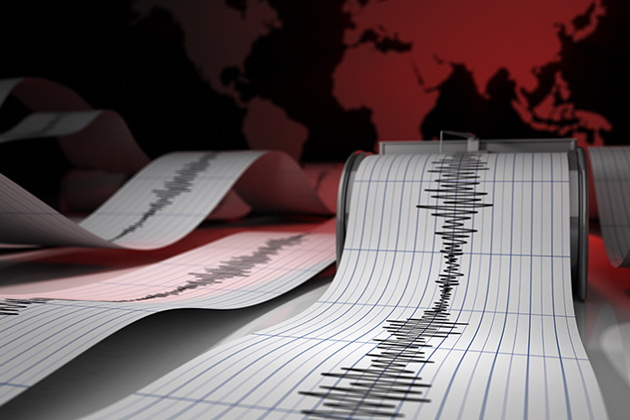
This year marks the 30th anniversary of the Northridge earthquake, which struck Southern California and caused $20 billion in damages. Since then, the earthquakes that have occurred in California in the past decade, like the 2014 Napa earthquake, the 2019 Ridgecrest earthquake sequence or even this February’s Malibu earthquake, have been too small or too far displaced from major metropolitan areas to cause much lasting concern.
However, cities and corporations in significant seismic hazard areas should remain vigilant. According to the 2023 revision of the U.S. Geological Survey’s National Seismic Hazard Model (NSHM), earthquake risk in the seismically active areas of California and Alaska has increased since the last model revision in 2018. Surprisingly, the new NSHM now also shows that the risk of damaging earthquakes on the East Coast is rising. The updated NSHM shows higher risk than previously believed along the I-95 corridor, which includes Boston, New York, Philadelphia and Washington, D.C.—a region where hurricanes, floods and nor’easters are usually the natural hazards of concern. Just last Friday, 42 million people got a vivid reminder of this risk when a magnitude 4.8 earthquake shook the New York City metropolitan area and nearby parts of the East Coast.
Historically, the East Coast of the United States has not been entirely immune to earthquakes. In August 1884, a magnitude 5.2 earthquake with an epicenter off Coney Island or the Far Rockaways shook New York City and the surrounding area, resulting in widespread building damage. More recently, a magnitude 5.8 earthquake with an epicenter approximately 38 miles northwest of Richmond, Virginia, was felt from Canada to Georgia and as far west as Illinois. The earthquake damaged notable monuments in D.C., such as the Washington Monument, the Smithsonian Castle and the National Cathedral.
The East and West Coasts are homes to millions of people, hubs of business and commerce, and essential to the global supply chain due to the critical transit infrastructure in the regions. The potential physical damage from a major earthquake in almost any metropolitan area can reach into the billions of dollars, which could be further compounded by long-term economic impacts from key pieces of infrastructure or whole areas being inoperable. Such a disaster would not only have a severe impact in the region, but perhaps the country as a whole.
Therefore, businesses and governments located in earthquake-exposed areas or those with a vested financial interest in earthquake-exposed areas must leverage the expertise and product offerings from the insurance industry to harden their balance sheet against major shakes and shocks. One particular insurance offering—parametric insurance—can provide claims transparency, quick post-event payment and fund flexibility, allowing insureds to kickstart their recovery efforts or backfill lost revenue after a major earthquake.
Parametric insurance uses physically measured intensity—called the index or the trigger—of the underlying loss-causing event to determine the insurance proceeds that are due. Generally, the most common triggers for earthquakes are the magnitude and depth of the earthquake or the ground-shaking caused by the earthquake directly at the insured's location. Other options, like the most severe ground-shaking within a pre-agreed distance of the insured's location, are also available but less commonly explored.
All earthquake intensity metrics, such as epicenter location, magnitude, depth and ground-shaking throughout the affected area, are recorded and reported by the U.S. Geological Survey (USGS), making the USGS the independent arbiter of fact after an earthquake. The insured, insurer or any other party to the transaction do not influence what the seismographs report and what the USGS publishes, making claims adjudication quicker and more straight-forward than traditional forms of coverage. There is no need for on-site claims adjustment as the policy is triggered by objective third-party data.
USGS data is available days to weeks after an earthquake occurs, so the process of determining if triggers are hit and if a payment is due can be finalized within 30 days of the event. Since coverage just requires that an earthquake occur and meet or exceed the intensity triggers outlined in the policy, parametric insurance proceeds are not tied to actual asset damage, so the insured can use the money they receive post-event to address losses beyond physical damage. Some potential use cases include:
- Covering assets that are underinsured or difficult to insure in the traditional market. For example, the insurance policy on the National Cathedral in 2011 did not include earthquakes, requiring the Cathedral to raise millions of dollars to cover repairs.
- Offsetting lost operational revenue due to broad area disruption or loss of a critical piece of infrastructure. For example, even without physical damage to owned assets, organizations in the hospitality industry could experience major financial disruption after an earthquake if the overall area becomes less appealing to tourists and conference organizers.
- Providing cash disbursements to employees affected by the event. This can help them to recover more quickly and, in turn, bring the company back to normally-staffed operations.
Earthquakes can be devastating and disruptive, and it is crucial to not make a false equivalency between the recent lack of such events and the apparent non-existence of seismic risk. As the newest NSHM suggests, the United States remains susceptible to earthquakes, even in areas long considered safe. While no business or government will ever be completely earthquake-proof, parametric insurance can help manage the potentially devastating financial and physical damage exposure.
